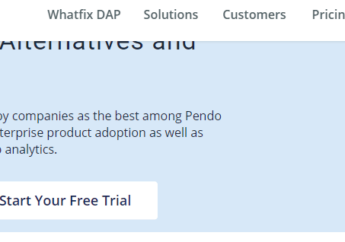What Is Remnant Advertising & How Does It Work?
by Abdul Aziz Mondal Advertising Published on: 02 November 2022 Last Updated on: 04 March 2025

Remnant advertising is a form of marketing that involves buying ad space or time on a remnant basis.
This means purchasing inventory that is left over after all other advertisers have bought up the desired space or time. For example, if a TV station has 10 minutes of commercial time to sell and only five advertisers purchase ads, the station may offer the remaining five minutes to a remnant advertiser.
Given this definition, remnant advertising can be used in just about any media type, including online, print, and broadcast.
So how does it work?
And is it worth your investment?
Let’s take a closer look.
How Does Remnant Advertising Work?
There are a few key things to understand about remnant advertising before we dive into how it works. First, remnant inventory is typically sold at a discount to what’s known as the “preferred” or “prime” inventory.
This is the ad space or time that’s most coveted by advertisers, and as such, commands the highest price. Second, while some remnant inventory may be unsold because it’s less desirable (for example, late-night TV slots), this isn’t always the case.
In many instances, the inventory is simply leftover after all other advertisers have purchased their desired amount.
With that in mind, let’s take a look at how remnant advertising works in practice. As we mentioned above, remnant ads are typically sold at a discount to prime inventory. This means that you may be able to get a lower rate on ad space or time that would normally be out of your budget.
Of course, the downside is that you may also end up with a less desirable placement (such as during late-night TV slots).
To find out what kinds of remnant inventory are available, you’ll need to contact the media outlet directly. In some cases, they may have an online remnant inventory tool that you can use (such as this one from AOL). Alternatively, you can reach out to your sales representative and inquire about any unsold inventory.

Once you’ve found some remnant ad opportunities that fit your budget and goals, the next step is to create your ad. This is where working with a professional agency or copywriter can be helpful, as they’ll be able to ensure that your ad is effective and compliant with the outlet’s guidelines.
Finally, it’s time to place your ad and start reaching your target audience. Keep in mind that remnant advertising isn’t necessarily a long-term strategy, so you may want to consider running your campaign for a shorter period of time (such as a few weeks or months). You can then use the data and insights you gather to inform your future marketing efforts.
Let’s dive deeper into these concepts to help you decide if remnant advertising is a good choice for you and to best utilize this marketing strategy.
What Is The Difference Between Remnant And Prime Inventory?
As we touched on above, remnant inventory is typically sold at a discount to prime inventory. So what’s the difference between the two?
Prime inventory is the most desirable ad space or time that a media outlet has to offer. This could be during high-traffic hours on a popular website, during the Super Bowl, or in the prime time slot on a TV network. Because of this, prime inventory is also the most expensive.
Despite what people may think, remnant inventory can be prime as well. It all comes down to how much inventory is available. For example, let’s say that a TV station only has two minutes of commercial time left to sell during its primetime slot. Given the high demand for this time slot, the station may be able to charge a premium for those last two minutes. In this case, the remnant inventory would be considered prime.

| Are Remnant Ads “Blind”? No, remnant ads are not “blind”. “Blind” ads refer to ad space that’s sold without the advertiser knowing where their ad will appear. This is typically done through programmatic advertising, which we’ll touch on later. With remnant advertising, on the other hand, you’ll know exactly where your ad will appear. This is because you’re working directly with the media outlet to secure placement. “There is a huge misconception that remnant ads are “unwanted” or “bad” spots. This is untrue. Brands of all sizes use remnant advertising to get massive exposure on top networks and stations. What’s more, 99% of the media we place is in daytime or primetime, not overnight.” Shane Yarchin, The Remnant Agency |
What Are The Different Types Of Remnant Advertising?
There are many different types of remnant advertising, which allows you to choose the option that best fits your needs, as well as mix and matches to create continuity and a more robust marketing strategy. Here are some of the most common types of remnant advertising:

1. TV and connected TV
TV remnant ads can be a cost-effective way to reach your target audience. You can also consider running ads on connected TV platforms, such as Roku or Apple TV.
2. Direct response ads
Direct response ads are a type of remnant advertising that allows you to include a call to action, such as a phone number or website. This can be a great way to generate leads and track the performance of your ad.
3. Creative / production costs
One advantage of remnant advertising is that you don’t have to spend much on creative or production costs. This is because you’re typically working with existing ad space or time, rather than creating a new ad from scratch. However, if you’re working with an agency like the Remnant Agency, they can help you create custom ad content for your campaign.
4. AM / FM radio
Radio is a great way to reach people while they’re commuting or doing other activities. You can consider running ads on AM/FM radio, as well as satellite radio and digital audio platforms, such as Pandora or Spotify.
5. Radio ad copy
When creating radio ad copy, it’s important to keep in mind that people are usually multitasking while listening to the radio. This means that your ad should be attention-grabbing and easy to understand. You should also include a call to action so that people know how to take the next step.
6. Static billboards
Billboards are a type of out-of-home advertising that can be very effective. You can consider running ads on static billboards, as well as digital billboards and transit advertising.
7. Programmatic ooh
Programmatic Out Of Home (ooh) is a type of remnant advertising that uses programmatic technology to place ads in specific locations. This can be a great way to reach people while they’re out and about.
How To Leverage Remnant Ads
When it comes to remnant advertising, it’s important to have a clear monetization strategy. This will help you make the most of your ad spend and reach your goals.
One way to do this is to focus on transactional products or services. These are products or services that people are more likely to buy on the spot, such as food, gas, or clothes.

Another way to leverage remnant ads is to offer a broad range of products or services. This can be a great way to generate leads and build brand awareness.
Finally, you can use a CPM calculator to help you determine how much you should spend on remnant advertising. This tool takes into account factors such as your target audience and the type of product or service you’re selling.
Remnant advertising can be a great way to reach your target audience and achieve your marketing goals. By working with an agency like the Remnant Agency, you can get access to top media outlets and take advantage of custom ad content. Contact us today to learn more about how we can help you grow your business.
Additionals:



































































































